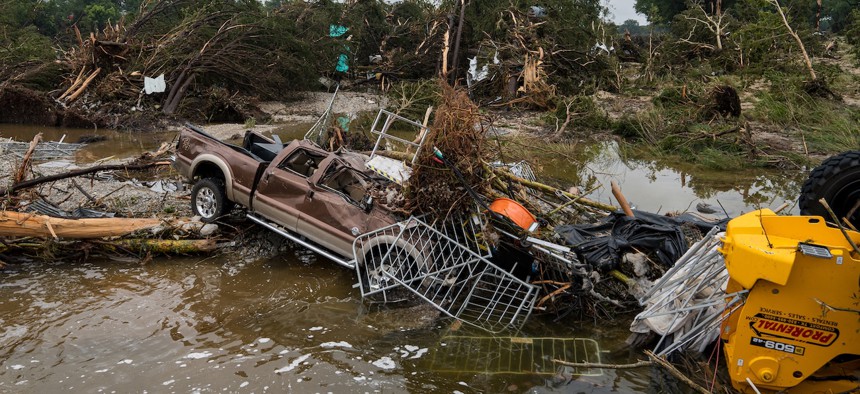Concerns Raised Over Government Cuts Following Fatal Texas Floods
The recent catastrophic floods in Texas have sparked a heated debate regarding the potential impact of budget cuts initiated during the Trump administration, particularly concerning the National Weather Service (NWS). Some Democratic lawmakers, including Senator Chris Murphy, have voiced their apprehensions, emphasizing the necessity of accurate weather forecasting to prevent deadly disasters. Murphy stated, “Accurate weather forecasting helps avoid fatal disasters,” suggesting that these cuts might have hindered the NWS’s ability to predict and warn of such extreme weather events.
Government’s Response
Addressing the claims, White House Press Secretary Karoline Leavitt asserted that the NWS offices were adequately staffed and labeled opposing claims as “completely false.” However, an investigation by BBC Verify into the staffing levels of the NWS during the Texas floods reveals a nuanced picture. While there has been a decrease in workforce due to previous efficiency measures under the Trump administration, experts interviewed indicated that the staff present during the floods appears to have been sufficient for effective forecasting.
Overview of Budget Cuts
The Trump administration proposed a substantial reduction of 25% to the annual budget of the National Oceanic and Atmospheric Administration (NOAA), the governing body for the NWS, which currently operates on a budget of $6.1 billion. Though these prospective cuts are set to kick in for the 2026 fiscal year, they would not have played a role in the events of the recent floods.
However, workforce reductions had already begun earlier under the guise of efficiency. Reports indicate that about 600 out of roughly 4,200 NWS employees were let go as part of a restructuring effort, which led to a significant increase in vacancy rates in many regional offices. Data from April highlighted that half of the NWS offices were experiencing a 20% vacancy rate, double what it was ten years prior.
Expert Analysis
Experts still believe the forecasts and warnings issued by the NWS for the Texas floods were reliable under the circumstances. Dr. Avantika Gori, a civil and environmental engineering professor at Rice University, noted that predicting the extreme localized rainfall characteristic of the recent flooding is inherently complex. Likewise, Andy Hazelton, a former climate scientist for NOAA, stated, “They got the watches and the warnings out,” implying that the existing staffing did not contribute directly to the flood disaster.
Local Office Impact
Despite the overall adequacy of forecasts, some local experts raised concerns about the ability of nearby NWS offices to effectively communicate critical weather updates to emergency services. Daniel Swain, a climate scientist at UCLA, posited that some of those communications may not have been optimal due to staffing shortages at regional offices. For instance, both the San Angelo and San Antonio offices were reported to have existing vacancies during the flooding events, impacting their operational capacity.
The San Antonio office, for example, had two meteorological positions unfilled, while the San Angelo office was missing a senior hydrologist essential for flood event analysis.
Weather Balloons and Forecast Quality
There has also been discourse on the reduction of weather balloon launches, with meteorologist John Morales claiming a 20% decrease. Weather balloons are critical for gathering data necessary for accurate forecasts. NWS stations typically launch them bi-daily, yet some locations have suspended or reduced launches, attributed to workforce issues. Nonetheless, it should be noted that balloon launches continued as scheduled at Del Rio, the nearest launch station to the flooding area, accumulating vital atmospheric data prior to the disaster.
Summary of Staffing Changes at the NWS
| Category | Details |
|---|---|
| Total Staff | Approximately 4,200 |
| Current Reductions | 600 staff reductions (early retirements, buyouts, and layoffs) |
| Vacancy Rate | 20% in half of the NWS offices |
| Texas Offices Staffing | Key vacancies impacted communication |
In summary, while staffing reductions during the Trump administration have raised concerns about the NWS’s operational capability, evidence indicates that the agency’s response during the Texas floods was as robust as could be expected under the circumstances.

